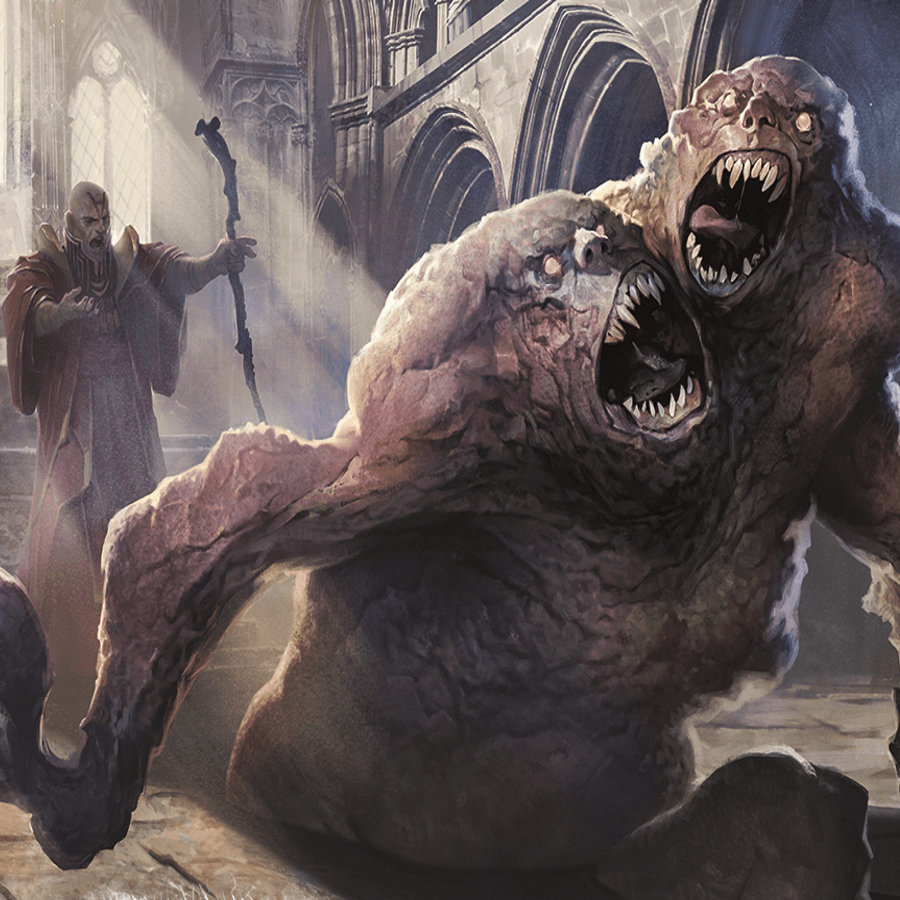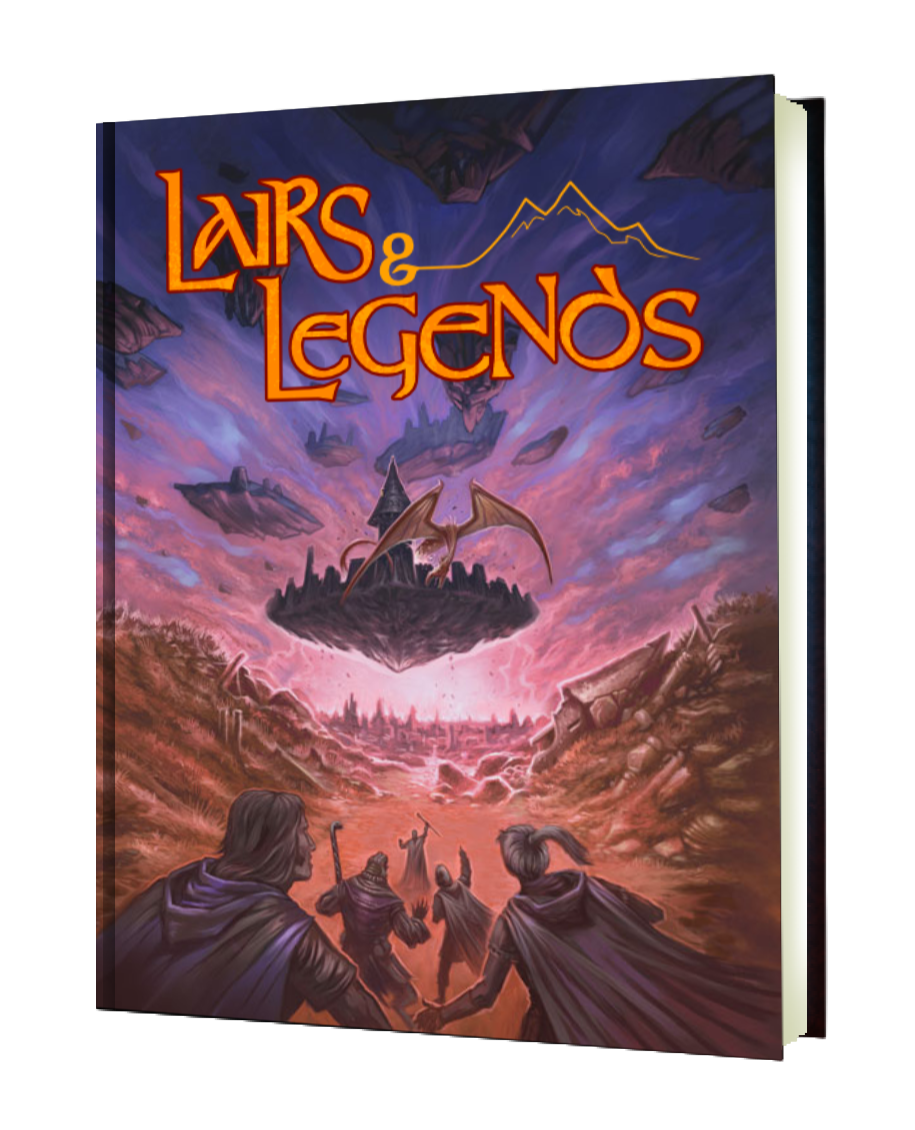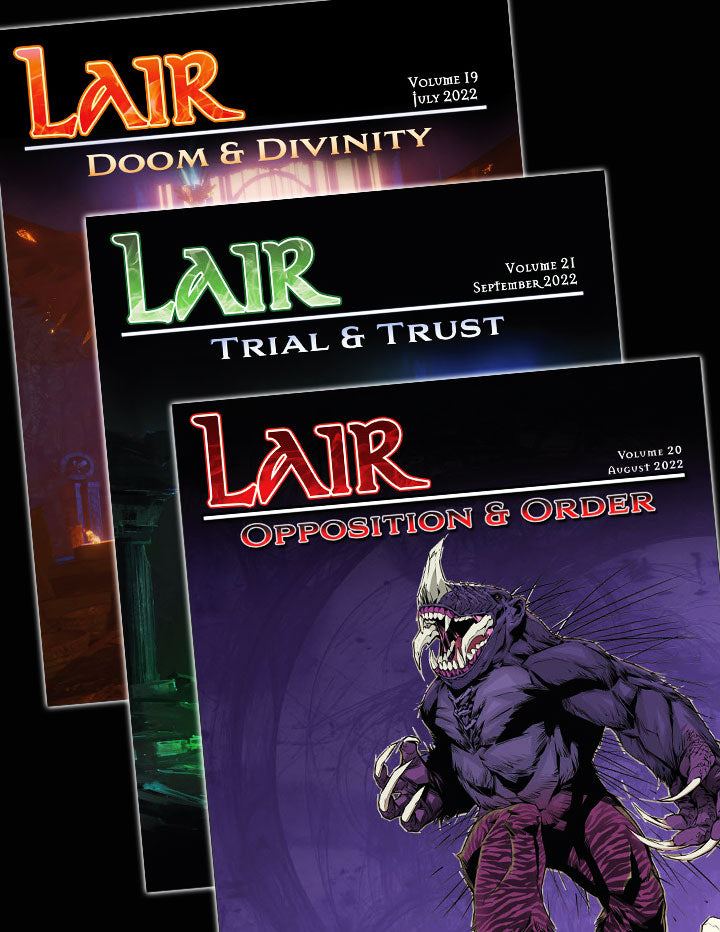5 Mistakes to Avoid with Disease in D&D

By Luke Hart
Disease should be an ever-present danger in the world. It can have such a massive impact that some undertake special training just to resist it—especially those who practice the stoic traditions of monkhood or the grandiose oaths of the paladin. So why are sickness and disease underused in D&D?
Simply put: The mechanics for them suck. In fact, they are mostly non-existent and rarely used.
But disease can be an amazing element to feature in your games! It can be a hazard for characters to overcome in an adventure, a core component of the setting with the threat of a particular disease constantly looming over the world, or even the basis of a campaign. Regardless of how you use disease, it adds an element of danger you can’t gain any other way—that of an unseen terror that slowly but efficiently infects and kills.
Also, to save you the trouble of taking notes, fleshing out specific rules, and creating your own tables, our new 5e disease system—Infection & Illness: A Treatise on Disease—is available in the Doom & Divinity, the July 2022 issue of Lair Magazine.
Watch or listen to this article by clicking on the video below.
Fast-moving lethal diseases might elicit fears of divine retribution, while slower-moving persistent diseases might warp an entire culture. Entire factions might even be dedicated to stopping a particularly significant disease . . . or helping it spread.
You see, sickness and disease are cool! They can make for an awesome game, adding an element rarely featured in D&D. However, there are some pitfalls to using disease. So, today, we’ll be looking at five mistakes to avoid when implementing diseases at your game table and what to do instead.
Not Having Diseases Worsen over Time
Many times in D&D, if someone gets sick, they have specific mechanical disadvantages that are static. That is, they don’t change. They don’t get worse. They just are.
However, a key hallmark of a disease is that it worsens over time. This worsening is typically combated by the infected person’s immune system, medicine, magic, and other means, but it is always a threat. So, you should have different stages for your diseases. Something happens when a person gets infected, and then the disease progresses, getting worse and worse.
In our new disease system, for instance, if someone is exposed to the disease Prickling Fur, upon initial infection, the person progresses to Stage 1 of the disease. And then, because Prickling Fur is a mild disease—more on disease severities later—every week, there is a chance the disease will progress to the next stage. And, of course, each stage of the disease gets progressively worse and has increasing disadvantages. These disadvantages are often mechanical—that is, they affect the character’s ability to function well in the game—but they don’t have to be strictly mechanical.
As a quick note, too, remember that you don’t have to use disease only with player characters—consider using disease as a backdrop to adventures and campaigns where mostly ordinary people are afflicted. Characters may or may not become infected because that’s not the point. The point is that you are running an adventure or campaign that features disease as a driving plot point.
Finally, if a disease progresses too far, it should become life-threatening, except in the case of the most minor illnesses.
Not Having Disease Spread
This is something else we often ignore. When someone gets sick, it often ends there. However, another hallmark of disease is that it spreads. Sometimes, the spread of disease often runs unabated for long periods, often forever in the cases of naturally occurring diseases in a particular region.
So, you should have some mechanics built in that addresses how diseases spread. In our new disease system, for instance, we’ve broken diseases up by their transmission types: airborne, insect-borne, waterborne, and direct contact. Then, the route of transmission determines the Rate of Random Spread, with airborne having the greatest chance of infecting others and direct contact the least.
Now, there’s a chance that your characters will scoff at becoming infected with some diseases because they are just too minor and they have crazy, god-like powers. However, remember that PCs are not the only people in the game world. What happens if the characters are nonchalant about the infirmities they carry because the mechanical drawbacks aren’t that bad, but as they jaunt across the game world, they are spreading those diseases to the general populace? A minor disease for a PC could be something dire for a commoner. So, don’t forget to consider that sort of thing and build in complications and consequences in your games that account for this.
Fun fact: I was recently in a game run by my team member Zac—you may know them as Goliath Cleric—and I was playing a monk named Bharbrek . . . who was immune to disease. But that didn’t stop Zac from having some of the populace in a large city become infected by my monk, who, though he was immune, was still a carrier of the pathogen. Of course, my monk Bharbrek didn’t care that other people got infected by him.
Not Having Varying Disease Severities
Many times in D&D a disease is a disease is a disease. But that’s not true in the real world: some things are minor, other things are really bad. For instance, we recently had a pandemic shut most of the world down. However, not every sickness and infirmity is that bad. Instead, there should a variety of disease severities in your game.
Mild diseases are, by definition, benign. They’re common, easily treated with proper knowledge, and have relatively mild symptoms that don’t typically threaten anyone’s life. Often, they will go away on their own without treatment, though it can be an unpleasant experience getting to that point. On the other hand, life-threatening diseases are the most serious that one can encounter. Without immediate treatment, the average person will likely die soon after showing their first symptoms. Resilient people—such as PCs—can withstand it for a while, but they will suffer extreme debilitation while doing so.
For instance, in our new disease system, we’ve broken diseases down into three severities: mild, moderate, and life-threatening. And, of course, the mechanical effects of the different severities are different, ranging from mild to really, really bad. Imagine that. Also, the progression varies by severity. Mild and moderate diseases check for progression to the next stage once a week; however, life-threatening diseases require a daily check, and there are no multiple stages: instead, they have a single stage and progress toward death instead of worsening symptoms.
Remember that mild diseases might be fairly common in your game world, moderate diseases less common, and life-threatening diseases quite rare. And why is that? Folks with mild and moderate diseases survive long enough to pass them on. However, people with severe diseases often die very quickly, perhaps before they can infect others. But also, the high mortality rate sparks fear and panic in the general populace. They will take extreme measures to quarantine the sick and sanitize—often by fire—anything they think might be infected, such as homes and personal belongings.
Making Treatment Too Easy
In D&D 5th edition, lesser restoration is the fix-all, the curer of everything, the healer of all disease! And almost every group, by the time they reach level three, is going to have at least one character that can cast lesser restoration. If you roll with this and allow lesser restoration to cure any and all diseases, it will render all diseases inconsequential. One quick little spell, and boop, you’re healed. Now, lesser restoration is hardly the only spell that can treat disease and sickness, but it’s a suitable benchmark to gauge the effectiveness of other spells.
My suggestion it to make treating and curing diseases more challenging—otherwise, you’re spending lots of game prep time to integrate diseases more, only to have them be trivial and meaningless—something your players might just ignore because it is easily overcome and cured.
For instance, in our new disease system, the effectiveness of lesser restoration is determined by the severity of the disease. Lesser restoration will cure most mild diseases that have not progressed to their life-threatening stage. When lesser restoration is cast on someone infected with a moderate disease, it will relieve the infected person’s symptoms for 24 hours and provide a better chance for recovery after treatment is applied. And finally, lesser restoration is unable to treat life-threatening diseases unless otherwise specified.
Also, don’t let magic be the only way to treat diseases! There should be other mundane cures available for people or the PCs to pursue. For instance, with Gut Infestation, consuming a paste made from rock-flowering nettle alleviates symptoms. Now, this plant is difficult to find, only growing in forest clearings away from the pollution of large cities—so that could be the backdrop and driving force for an adventure that your players might go on, either to heal themselves or a group of NPCs requesting their help.
I want to note here, too, that when you use diseases in your game, you don’t always have to challenge your players’ characters with them. That is, the PCs might not be the ones getting sick. They are the heroes in the game and incredibly powerful, so it might not make sense that they are infected—though they certainly could be. Instead, consider also using disease and infirmity as a driving force for some of the adventures your players’ characters might go on.
Ignoring Disease after Death
With one of my gaming groups, it is an ongoing joke that “death heals all.” In other words, whatever affliction you might have—exhaustion, poisoned, reduced maximum hit points, disease, etc.—if the group doesn’t have healing magic to fix it, they could just let the character die and then use revivify—because, you know, for some reason that would completely heal them from whatever ailment they had. And this, of course, is a myth floating around out there—it is completely false. In the case of disease, someone who dies while infected should have a more difficult time coming back from death and likely still be afflicted with the disease if they do return.
In our new disease system, if an individual dies while infected with a disease, the disease does not instantly disappear. For the first 2d10 days after death, the body continues to be a vector for continued infection, with the disease continuing to spread from the body the same way it did while alive.
Now in the case of magic that raises a person from the dead, for spells that do not state they cure disease after being cast, the character returns in the same stage, with the same afflictions they had at death. As a mild concession, any permanent death saving throws that failed will reset, providing a fresh, albeit difficult, chance at recovery.
However, even if the spell does cure the disease, there is a chance the character might be re-infected, along with the spellcaster, who must cast the spell while in close proximity to the diseased character. And why is this? That disease might have been cured from their body when the spell was cast, but it might still infect their clothing and personal effects . . . and it might have spread to the caster while they were casting the spell to raise them from the dead.
Get Our 5e Disease Ruleset!
Infection & Illness: A Treatise on Disease is a 5e disease ruleset that allows GMs to incorporate mild, moderate, and deadly diseases into their campaigns. You can pick it up in Lair Magazine #19, Doom & Divinity.
You'll also get two 5e adventures and fifteen legacy magic items!
Of course, with Lair Magazine Bundle: Issues 34-36, you'll get Doom & Divinity and two other issues: Trial & Trust and Opposition & Order. That's nearly 200 pages of 5e and PF2e GM resources!
-
Posted in
Game Master How-To Articles










